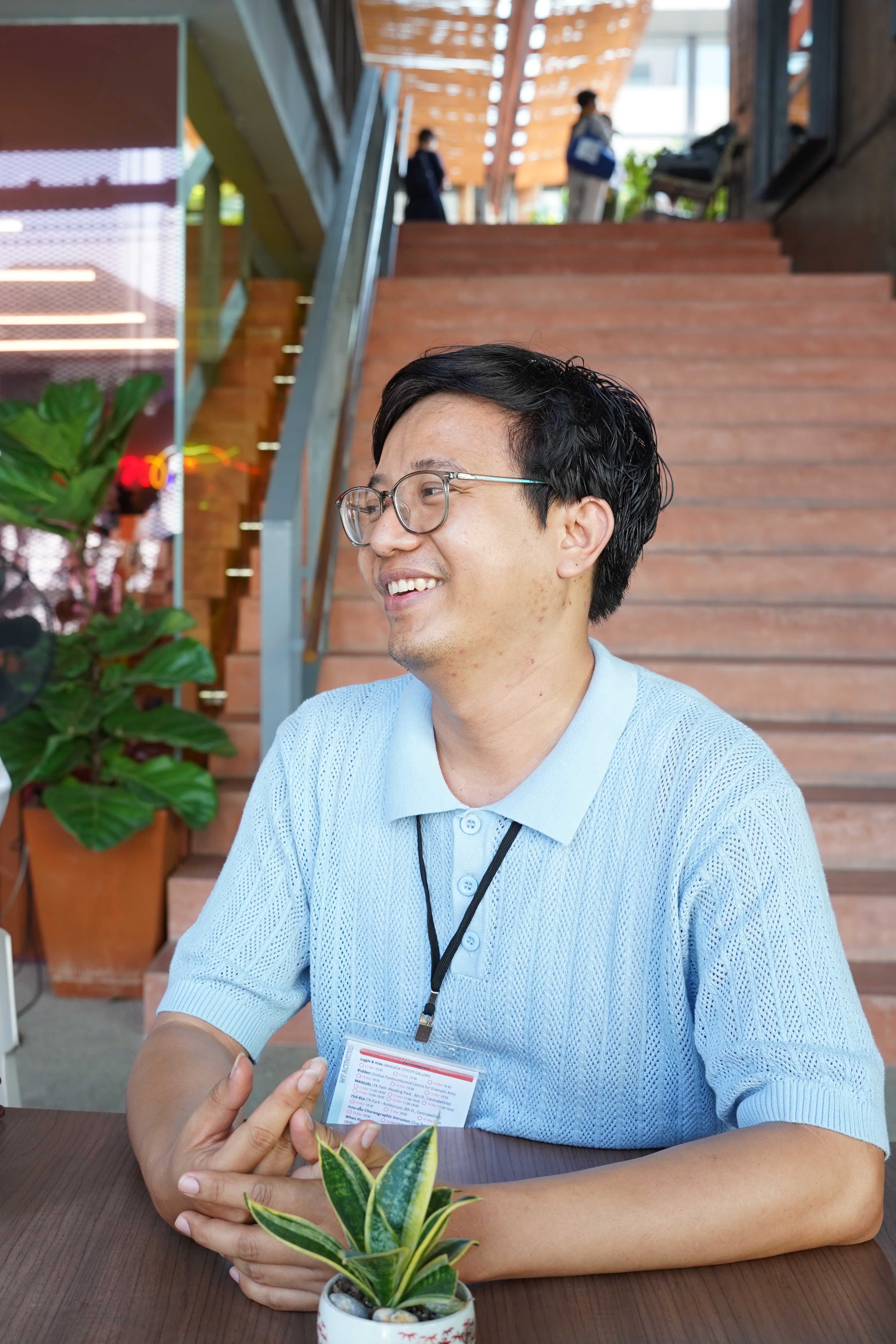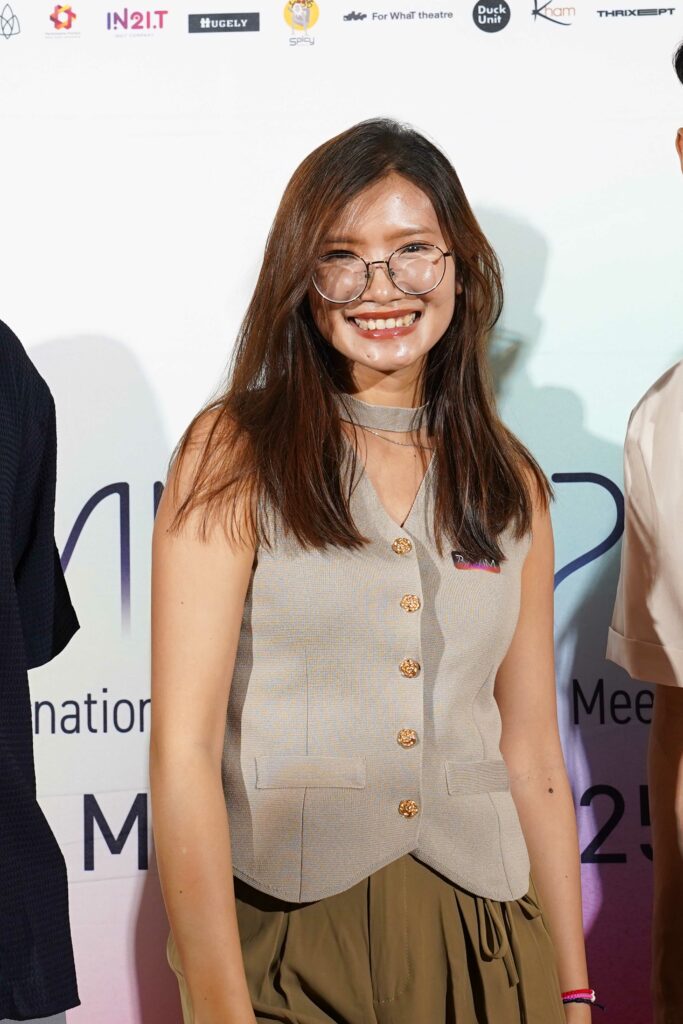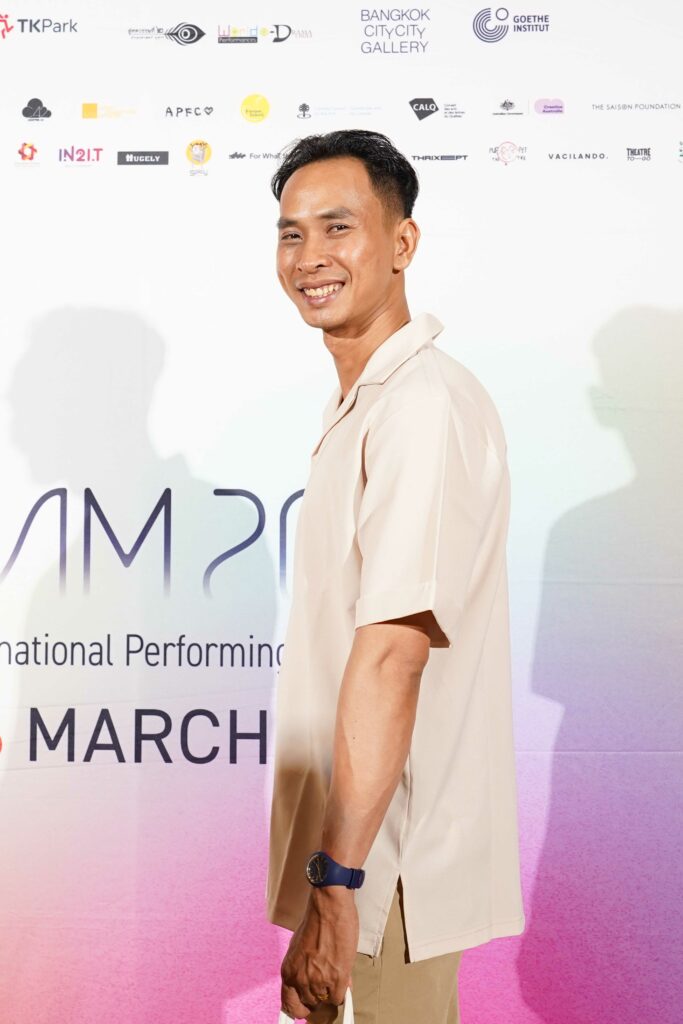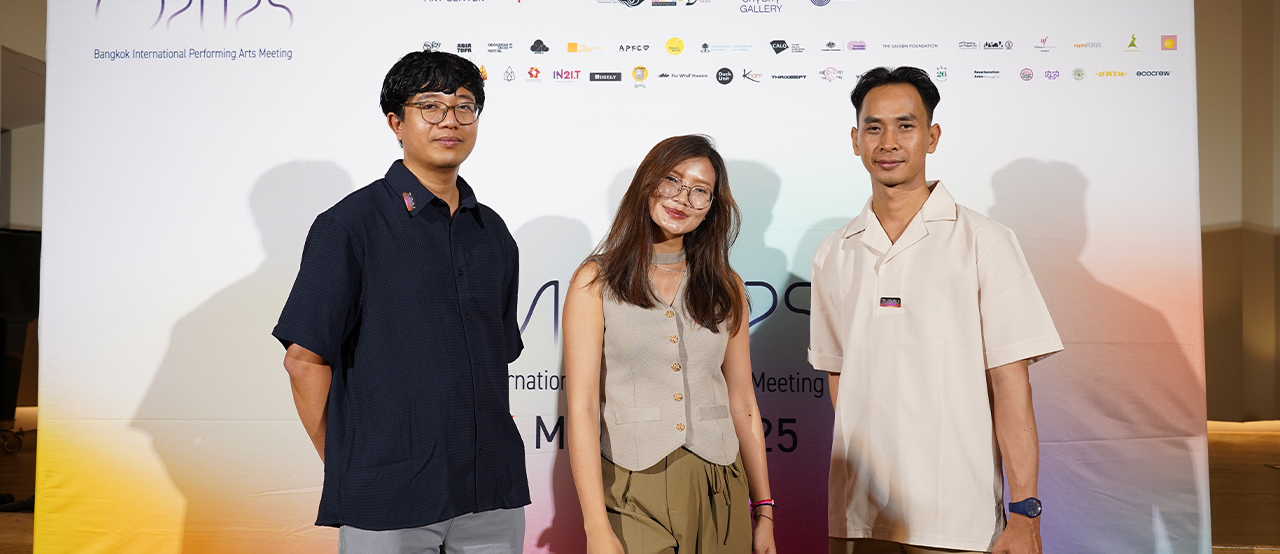Three Cambodian artists and cultural program leaders—each at different stages in their careers—have returned from the Bangkok International Performing Arts Meeting (BIPAM) with a renewed purpose. From informal exchanges with festival organizers to eye-opening performances like Pesta Boneka from Yogyakarta, and Juggle and Hide from Thai-Japanese collaboration, their time at BIPAM has already sparked concrete action, as grantees came home with notes full of new ideas.
Their stories reveal not only the value of international exposure, but also how regional platforms can serve as powerful catalysts for professional and community transformation. One grantee reflected on lessons in artistic entrepreneurship and resilience, while another began exploring cross-disciplinary collaboration with a Cambodian visual artist they met at BIPAM. Some have already shared these insights with musicians, teachers, and peers, laying the groundwork for future knowledge exchange and deeper regional engagement, according to Yon Sokhorn, our Program Director.
Keat Sokim: Rethinking the Role of Music
As School Director of Friend Music School and a musician, Keat Sokim described his initial motivation for applying to the Mobility Grant: a curiosity about the broader Southeast Asian arts landscape. “Since I work with arts, I am well connected within this industry in Cambodia,” he said, “but I realized how little I know about what’s happening beyond our borders.”
Sokim wants to know where Cambodian positions are among the regional arts landscape. He remarks, “As the old saying goes: hearing something a hundred times is not the same as witnessing it once yourself.”
At BIPAM, he was drawn to how other countries in the region were reimagining music—not just as entertainment, but as a form of storytelling and social reflection.
“I witnessed a music performance that was so remarkable,” Sokim reflects. “I deeply admire the director, who was able to lead three groups where musicians and non-musicians alike created a collective musical piece using everyday objects. They were minimalistic. The fact that they did not rely on traditional music notation, but instead engaged in a purely creative collaboration left me wondering how we might experiment similarly within our own teachings.”
Sokim also exchanged a meaningful conversation with a professor from Silpakorn University whose faculty launched music and entertainment business programs and courses designed to support students pursuing careers as music entrepreneurs. He learned that over 200 students enrolled in three years—though none had yet graduated. He called it “a daring leap” that left him both inspired and frustrated. “These are paid courses,” he noted, “while in our Cambodian context, we struggle to find enough students to even fill a music class. The contrast is striking.”

Given the limited domestic market for Cambodia’s music industry, expanding across borders could offer significant opportunities. Sokim said he has explored this path through publishing translations of traditional Khmer music into the international notation system—allowing global readers to understand and perform Cambodian traditional music. Although this was a small step with limited resources, it was meaningful for him. “Both my own efforts and the encounters at BIPAM have given me greater hope and motivation to consider what more we can do to advance in this sector.”
Seilakvoatey Ly: From Bonn Phum to BIPAM
For Seilakvoatey Ly, Festival Manager of Bonn Phum on the Move (Provincial Festival), BIPAM was the first opportunity to connect with fellow artists, producers, and cultural project managers across Southeast Asia. It also finally brought her to Chang Theatre, the studio which she described as “a place I had long heard about for its reputation, but hadn’t had a chance to see in person.”
BIPAM provided more than just introductions; it offered moments of deep inspiration. Performances such as Juggle and Hide, which used objects as protagonists in a highly technical narrative performance, left her in awe. “The idea that inanimate things could tell their own story—that was a moment of ‘wow’ for me,” she reflected.
Equally compelling was her encounter with a performer from the ALaLa Dance Fest of Chiang Mai—an artist, manager, and founder rolled into one work of art—and with Yogyakarta-originated Pesta Boneka, which brings together artists from 25 different countries on a stage that showcases diversity and cross-cultural collaboration.
Emerging festival design has two functions: to support contemporary performing arts but also to boost local tourism. Voatey said it gave her fresh ideas for integrating creative and business strategies in her own festival planning. However, Voatey is modest and humbly said, “It’s a long way to go but I have written it down.”
While it is too early to determine whether attending BIPAM will have an immediate impact or translate directly into new initiatives for the Bonn Phum Festival, she will put those ideas collected from BIPAM on the table to discuss with her team, as she already identified possible contacts and networks for future collaboration.

Vong Vannak: Embracing Risk and Courage in Creative Process
For circus teacher Vong Vannak of the Secondary School of Fine Arts, BIPAM was a platform that brought together a community of like-minded artists. It reconnected him with his sense of purpose, and sparked renewed motivation and personal transformation.
“There was a spirit there,” he said. “It’s the spirit of “daring to create”.
Vannak was moved by a contemporary dance piece which explored the impact of technology on society. The performance, followed by an open Q&A, revealed an artistic culture that welcomes young voices, encourages experimentation, and offers supportive feedback. “I could see that they were very open to young artists exploring and experimenting with their creative processes without being too judgmental. That really kept inspiring me,” Vannak shared.
The visit to Chang Theatre—a space for contemporary dance and visual art that receives no government support—left a similarly deep impression on the three grantees. While their work isn’t always accepted in their own country, as our grantees observed, the artists’ persistence and resilience in navigating markets beyond borders and reaching European audiences prompted reflections on how we—young artists and cultural leaders—can remain true to our vision, even in restrictive environments.

A Growing Network of Creative Catalysts
By now, the picture should be clear: meaningful change in Cambodia’s cultural sector begins with strategic support. From our experience, one of the most effective ways to create a lasting impact is through investing in regional mobility for artists. In a landscape where opportunities for advanced learning and exchanges are scarce, these programs offer critical exposure to new practices, ideas, and networks.
Program Director Yon Sokhorn has observed both tangible and subtle shifts among grantees. “They showed early signs of personal and professional growth,”she remarked. “[…] They gained initial exposure to regional practices in event production, artist sustainability, and creative leadership, which sparked ideas for adapting similar approaches in Cambodia.”
“Ultimately, we want the Mobility Grant to not only support individual development but also help build a stronger, more connected, and resilient arts ecosystem for Cambodia,” Yon Sokhorn added.
In this broader frame, support for artist mobility is more than a cultural gesture—it is an investment in leadership, in social cohesion, and in a more imaginative and resilient future. For those considering how to contribute meaningfully, this is where impact begins to take root. As Sokim, Voatey, and Vannak have shown, when Cambodian artists are given the opportunity to step beyond borders, they return not only transformed, but ready to transform others.
